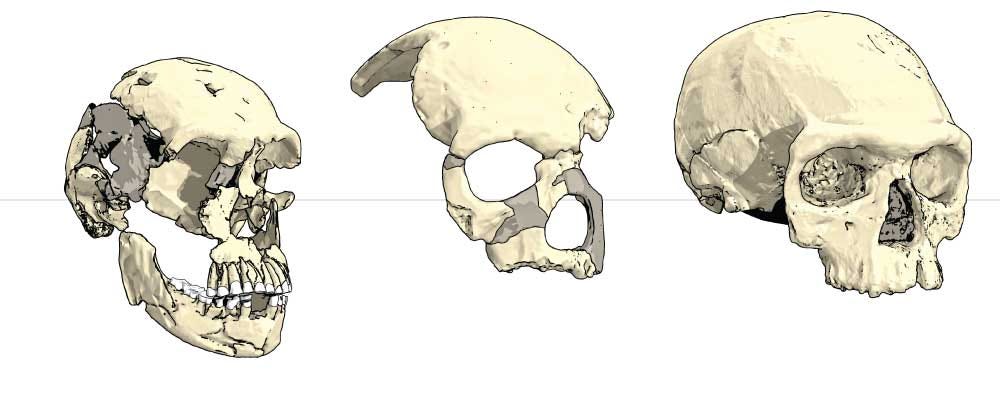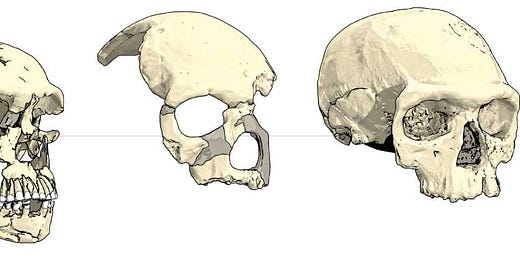How old is the "early Homo sapiens" skull from Florisbad?
Introducing a new preprint in which I examine critically the evidence for a skull thought to be contemporary with Homo naledi.

This week, Lee Berger and I posted a new preprint in which we investigate the context of the Florisbad fossil hominin specimens. Our preprint is on the open AfricArXiv site for free download: “Revisiting the age of the Florisbad hominin material”.
In 1996, Rainer Grün and coworkers used electron spin resonance (ESR) and other methods to estimate the geological age of a hominin tooth from the site, finding it to be 259,000 ± 35,000 years old. The most significant hominin fossil from the site is a fragmentary skull with parts of the forehead, face, and parietals. The combination of archaic and modern aspects of this skull led researchers to think that it may be a transitional form that preceded the first modern humans.
A transitional pre-modern human form in southern Africa 259,000 years ago was exactly what researchers expected to find in 1996. In 2020, that same finding looks more and more problematic. Today we know that Homo naledi lived around 400 km from Florisbad at around the same time. The Florisbad date seems to show that a large-brained human population existed in the same geographic region as H. naledi. Did these two very different hominin populations coexist?
We thought it was time to revisit the 1996 Florisbad age result to see how solid it looks from today’s perspective. What we found is that there are several reasons to doubt that the fossil is really 259,000 years old. The history of the Florisbad spring site and its excavations reveals many problems that the 1996 work mostly did not consider.
I have to say I am constantly struck by today’s ability to look into the history through contemporary papers and documents. To estimate the geological age of any fossil hominin specimen, we must understand the original context. In the case of Florisbad, very little of that context was recorded to a standard that would enable today’s geochronologists to be confident about the original placement of the hominin fossils.
What was recorded about the site gives serious pause to any attempt to work out the age of the hominin specimens. Methane emerging from the springs periodically erupted, mixing sediments through parts of the site where the skull and tooth were found, questioning their association and placement within the site. The original excavations reported that the hominin skull fragments came from a peat layer, but the radiation in this peat was never measured by geochronologists. That’s an important omission, because as we found, today’s geochronologists recognize peat as a seriously impressive natural concentrator of uranium.
I don’t think we’ll ever know the age of the Florisbad hominin material. It’s tragic that so much of the African hominin fossils that are now attributed to the Middle Pleistocene was unearthed at a time when detailed spatial and stratigraphic context were not often recorded. It is a mistake to think there is any “silver bullet” approach that can provide the ages of such fossils.



